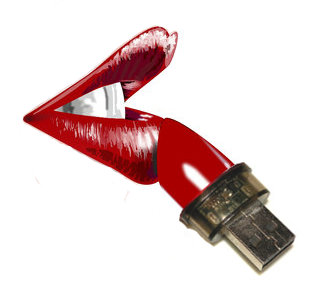LispStick!
Table of Contents
1 ListStick! is an entire Common Lisp Development Environment for Microsoft Windows
It is not that easy to put together a full featured Common Lisp environment on Windows. It can take much time to get everything running, especially if you are new to Common Lisp.
For those of you who experienced difficulties in that task, LispStick! could be a very convenient solution. Lispstick! can be unpacked into a directory of choice in your file system or even onto an USB-stick, to be available to you, if you only have access to some windows box.
2 LispStick! contains SBCL, Emacs, SLIME and Quicklisp
- SBCL is the most popular open source Common Lisp implementation today.
- SLIME, the Superior Lisp Interaction Mode for Emacs is the IDE of choice for CL.
- Quicklisp is the most sophisticated packet manager available for CL.
Together this components make up the environment of choice for Common Lisp programming to me.
3 Installation is "Hygienic"
LispStick will not splatter files across your PC. It will only work with its own installation directory. For an installation on an USB stick, this means on the other side, that you will always have your Common Lisp projects and your Quicklisp installations with you.
4 Getting Started
4.1 Download and Installation
Simply unpack the lispstick zip file onto a drive of your choice. You will end up with
some folder like D:\LispStick.
Then click the contained file RUN.BAT and Emacs/SLIME/SBCL starts up.
4.2 Some Hits if you are new to Emacs, SBCL, Slime and Quicklisp
If you are new to Common Lisp and/or Emacs and/or Slime, the best you can do now, is to start up LispStick! by clicking RUN.BAT and switch your browser directly to Chapter 2 of Peter Seibel's "Practical Common Lisp". It will introduce you into your new development environment.
But you can also read on and take my few humble hints:
4.2.1 Emacs Keystrokes
If you are not used to Emacs, press Ctrl-h and then t. This will bring up the Emacs tutorial.
4.2.2 SLIME
The LispStick! installation uses the key F12 to switch between various SLIME-Buffers. To get to the REPL for interactive work with Common Lisp, press F12 and then r. You can immediately enter Lisp-Expressions for evaluation. You can access the history of your inputs with Alt-p and Alt-n.
4.2.3 SBCL
If you enter errornous sexprs, then SBCL will send you into the SBCL-debugger, where you are enabled to inspect stackframes and activate Restarts. For the first times, simply leave the debugger with q, then bring back your last input with Alt-p", and correct the command.
SLIME offers completion of SBCL-Inputs with the TAB-Key.
4.2.4 Quicklisp/Quickproject
To start a new project, load quickproject:
(ql:quickload :quickproject)
Then create the new project (e.g. "my-project") with
(quickproject:make-project :my-project :depends-on '(alexandria cl-ppcre))
(alexandra und cl-ppcre are just examples for required systems). Your new project will go to
LISPSTICK-HOME-DIR /quicklisp/local-projects/my-projekt.
The main Lisp file of your Project will be LISPSTICK-HOME-DIR /quicklisp/local-projects/my-projekt/my-project.lisp.
To load this file into Emacs, use Ctrl-x Ctrl-f. Then enter the path and the filename. Emacs will offer to you automatic filename completion with the TAB key.
Later on you can load your project with (ql:quickload :myprojekt).
5 Upgrading LispStick
5.1 SLIME
You can always get the actual cvs-snapshot of SLIME from this this download
link. Unpack it into your LispStick!-Directory. Then open RUN.BAT
and adapt the environment-variable SLIME.
5.2 Emacs
New Versions of GNU Emacs for Windows are appear on this page. Unpack
the zip file into yout LispStick!-Directory. Then open the RUN.BAT
file and adapt the environment-variable EMACS.
5.3 SBCL
Windows SBCL can be downloaded as msi file from the SBCL download
page. Start it. The Installer suggests
installation to C:\Program Files\Steel Bank Common
Lisp\<sbcl-version>\. Substitute C:\Program Files\ with your
LispStick!-Directory. Unselect all the environmental settings
(desktop-icon, PATH, etc) and start the installation. Then adapt the
variable SBCL in the RUN.BAT file.
5.4 Quicklisp
Download the file quicklisp.lisp into your
LispStick!-Directory. Execute (load "quicklisp.lisp") in the Lisp
REPL. Follow the printed instructions. Take the QuickLisp installation instructions
for reference.
6 Feedback
Please contact me at gmail.com. My address is patrick.krusenotto
